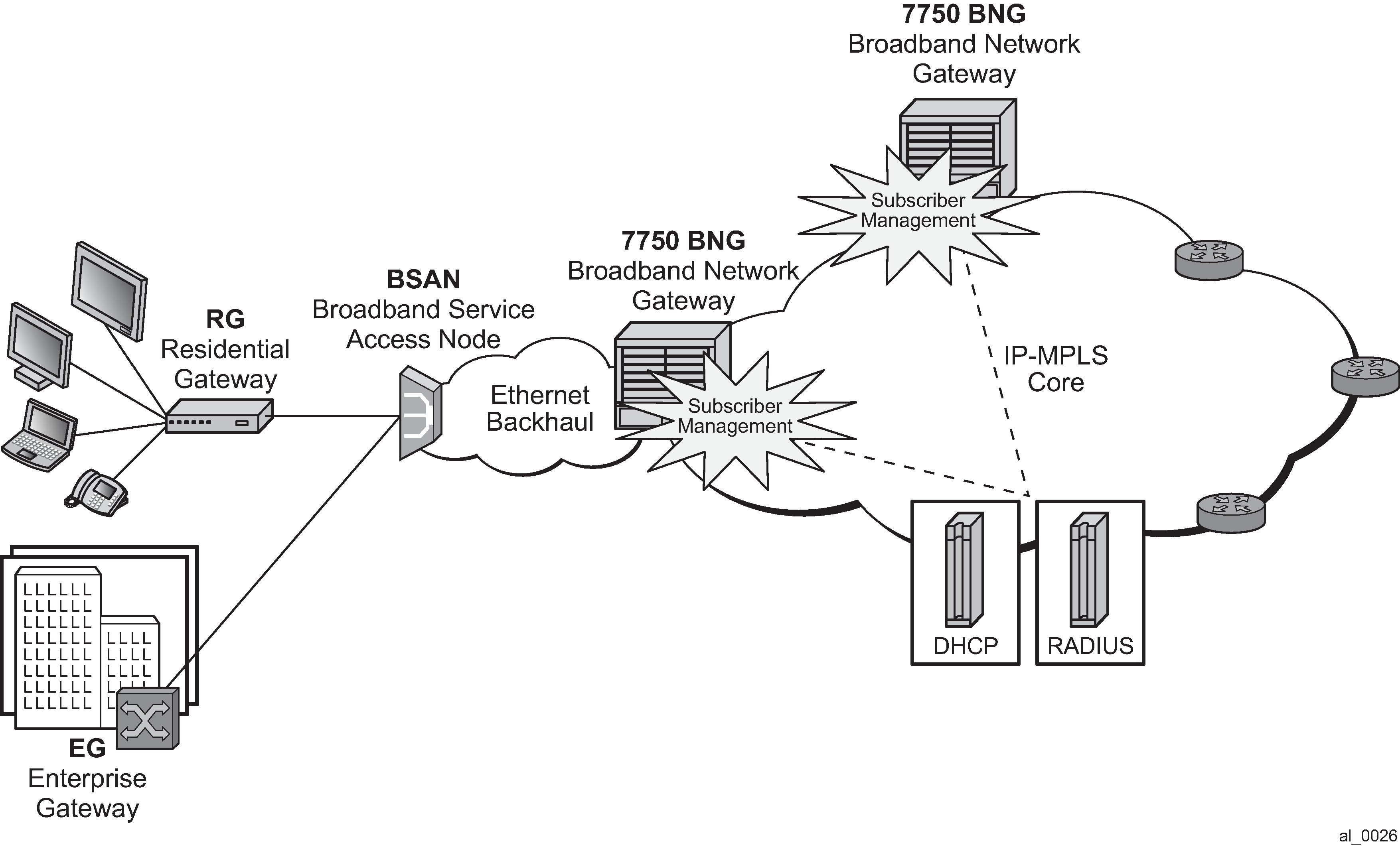An application of this feature in a BNG is shown in Figure: BNG application.

Residential and business subscribers use PPPoEoA, PPoA, IPoA, or IPoEoA based session over ATM/DSL lines. Each subscriber host can use a different type of session. Although Figure: BNG application illustrates ATM/DSL as the subscriber last mile, this feature supports both ATM and Ethernet in the last mile.
A subscriber SAP is auto-configured through DHCP or the RADIUS authentication process, or is statically configured, and uses a Q-in-Q SAP with the inner C-VLAN identifying the subscriber while the outer S-VLAN identifies the Broadband Service Access Node (BSAN) which services the subscriber, such as, the DSLAM. The SAP configuration is triggered by the first successfully validated subscriber host requesting a session. Within each subscriber SAP, there can be one or more hosts using any of the above session types. The subscriber SAP terminates on an IES or VPRN service on the BNG. It can also terminate on a VPLS instance.
When the 7750 BNG forwards IP packets from the IP-MPLS core network downstream toward the Residential Gateway (RG) or the Enterprise Gateway (EG), it adds the required PPP and Ethernet headers, including the SAP encapsulation with C-VLAN/S-VLAN. When the BSAN node receives the packet, it strips the S-VLAN tag, strips or overwrites the C-VLAN tag, and adds padding to minimum Ethernet size if required. It also adds the LLC/SNAP or VC-mux headers plus the fixed AAL5 trailer and variable AAL5 padding (to next multiple of 48 bytes) and then segments the resulting PDU into ATM cells when the last mile is ATM/DSL. Thus the packet size undergoes a fixed offset because of the encapsulation change and a variable expansion because of the AAL5 padding when applicable. Each type of subscriber host session requires a different amount of fixed offset and may require a per-packet variable expansion depending on the encapsulation used by the session. The BNG node learns the encapsulation type of each subscriber host session by inspecting the Access-loop-encapsulation sub-TLV in the Vendor-Specific PPPoE Tags as specified in RFC 4679. The BNG node must account for this overhead when shaping packets destined for subscriber.